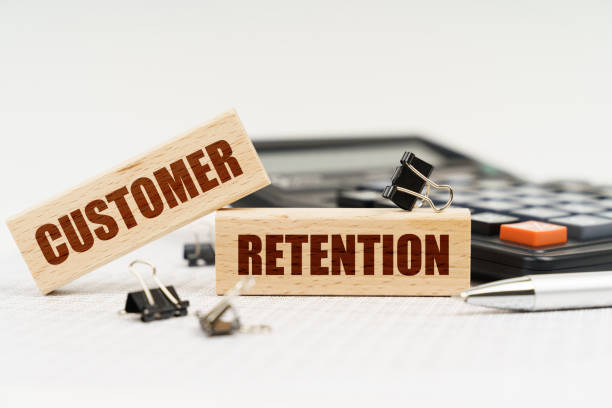Navigating Consumer Behaviour and Inflation: Strategies for Brands in 2023 Rahmat Olayiwola Content Writer Table of content Introduction Inflation has become a constant presence in recent years, causing prices across various categories to surge. Inflation not only affects individuals’ purchasing power but also influences their financial decisions and, consequently, their behaviour as consumers. Inflation is a significant economic phenomenon that impacts various aspects of our lives, including our purchasing power, savings, and overall consumer behaviour. As we delve into the inflation trends of 2023, it is crucial to understand how this economic factor shapes consumer behaviour. This article explores the effects of inflation on consumer behaviour in 2023 and provides strategies for brands to adapt and thrive in this challenging economic environment. The Inflation Challenge One of the fundamental issues stemming from inflation is the disconnect between rising prices and stagnant incomes. Most incomes are failing to keep up with the pace of inflation, placing a significant burden on consumers when it comes to deciding where to allocate their hard-earned money. Only a small percentage of consumers have experienced wage increases that match or exceed the rate of inflation, leaving the majority to struggle to maintain their standard of living. As a result, households are facing worsening financial conditions. Savings are dwindling, and debt levels are on the rise as consumers turn to credit cards and loans to cover their expenses. Consumer Awareness and Conversation Inflation is not merely media hype; it’s a topic of regular conversation among consumers. As high prices for everyday goods and services persist, people are discussing inflation within their social circles. While consumers may not always use the term “inflation,” they refer to the rising costs of items they spend money on, such as gas or takeout food. Brands must acknowledge these concerns and address them using language that resonates with their customers.Price remains a paramount factor influencing purchase decisions, as consumers closely monitor their spending. Any changes in the prices of products and services they typically buy have a significant impact on their purchasing choices. To ease the pressure on consumers, brands should consider making product or service modifications that reduce costs for the business. Transparency and authenticity in communication are crucial during this period of transition. Enjoying the Article? Sign up For Our Newsletter Consumer Behavior Shifts Consumers are adapting to inflation by adjusting their expenditures. They are switching to fewer or cheaper goods, avoiding dining out, and cutting back on travel and leisure activities. These changes reflect their efforts to focus on necessities and control their spending. Simultaneously, consumers are seeking financial help, exploring job opportunities, and taking on extra work to offset the impact of inflation on their finances. Effects of Inflation on Consumer Behaviour 1. Purchasing Power ErosionOne of the most direct effects of inflation on consumer behaviour is the erosion of purchasing power. Inflation causes the general price level of goods and services to rise over time. Consequently, consumers find that their money can buy fewer goods and services than it used to. This leads to changes in consumer behaviour, as people may opt for cheaper alternatives or cut back on discretionary spending. 2. Altered Spending PrioritiesAs inflation escalates, consumers often reassess their spending priorities. Necessities such as food, housing, and transportation take up a larger portion of their budgets, leaving less room for discretionary spending on non-essential items like entertainment, dining out, or travel. This shift in spending priorities can significantly impact industries that rely on consumer discretionary income. 3. Savings and Investment ChoicesInflation can influence how consumers approach saving and investment. When inflation rates are high, traditional savings accounts and low-yield investments may not keep pace with the rising cost of living. As a result, consumers may seek out higher-return investments or alternative assets, such as stocks, real estate, or commodities, in an attempt to preserve their wealth and hedge against inflation. 4. Debt ManagementInflation can have both positive and negative effects on debt management, depending on the type of debt consumers hold. Fixed-rate loans become more attractive in times of high inflation because borrowers repay their loans with devalued currency. However, variable-rate loans can become more burdensome as interest rates rise along with inflation, leading to increased debt servicing costs. 5. Consumer Confidence and Economic OutlookConsumer behaviour is closely tied to consumer confidence, which, in turn, is influenced by inflation trends. When inflation rates are stable, consumers are more likely to have confidence in the economy and their financial future. However, rapid or unpredictable inflation can erode confidence, leading consumers to cut back on spending and adopt a more cautious approach to financial decisions. 6. Wage Negotiations and Labor Market DynamicsInflation can impact labour markets and wage negotiations. Workers may demand higher wages to keep up with rising living costs, leading to potential labour disputes and strikes. Employers, on the other hand, may be reluctant to raise wages too quickly, fearing the impact on their bottom line. These dynamics can lead to shifts in the labour market and influence consumer behaviour as individuals navigate changing income levels. 7. Behavioral Changes in Saving and InvestmentIn response to inflation, consumers may alter their savings and investment behaviour. This might include increasing contributions to retirement accounts, seeking out inflation-protected securities, or diversifying their investment portfolios to mitigate inflation risks. These changes can have long-term effects on an individual’s financial well-being and retirement planning. Winning Over Customers in the Age of Inflation For brands operating in this challenging economic environment, there are several strategies to consider: 1. Digital Experience Innovation: Digital channels are key in lowering the cost to serve customers. Brands should focus on designing digital experiences that enhance engagement and deliver bottom-line results. Convenience and accessibility are crucial factors for consumers when choosing where to spend their money. 2. Customer Segmentation: Understand that different customer segments have diverse needs and intentions. Monitor changes in your customer base and tailor the customer experience to meet the specific needs of each cohort.3. Price Consideration: Striking the right balance between
Navigating Consumer Behaviour and Inflation: Strategies for Brands in 2023 Read More »





















